In solchen Fällen singe ich spontan einen Lobgesang auf denjenigen, der den Entkäferer erfunden hat. Ich frage mich, was Programmierer früher gemacht haben, als das Programm ihnen noch nicht selbst erklärt hat, was es tut.
bleistift2
That image you linked requires authentication to download.
Was there supposed to be a “not” under that yellow blotch in the speech bubble?
I think the homeowners are right regardless. You don’t need to be a genius to figure out that even a moderately higher population density increases transportation demand. Even doubling the density could affect traffic considerably.
Now before the haters come out: I’m not saying that the transportation demand must be addressed by more or bigger roads.
Look at the last table in my original post. It contains 26 columns (A–Z), some of which are not shown, and 27 rows (blank–Z). There are 27 rows and 26 columns, regardless of the contents of the table. If the top-left cell (A, blank) were a 1 and (B, blank) were a 2, then (Z, blank) would contain a 26, and ZZ would contain a 702. Nothing about the layout of that table changes.
To summarize: The table will always be lopsided, if you start counting at 0 or at 1.
You’re absolutely right! Those dumb English people are wrong for not adhering to the German spelling reform. How dare they?
Also the spelling reform only changed the previous ß to a ss. The spelling reform has nothing to do with the c/k debate. What was your point again other than brainless insults?
Meta und Super sind verschiedene Tasten.
Like every name in IT in the last 10 years.
“Windows App”
“Rust”
Krass is German.
c not as fun as k.
That’s the worst attempt at Motte-and-bailey I’ve ever seen.
no one cares.
This conversation proves otherwise.
Suchergebnisse für „empty” auf emojipedia:

Auf emojikitchen:

Nope.

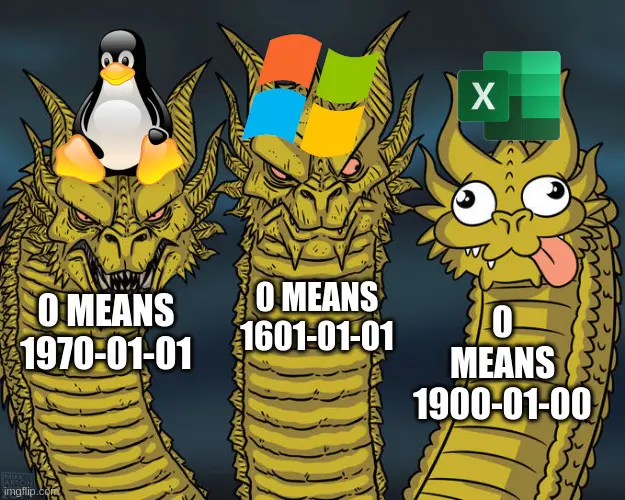
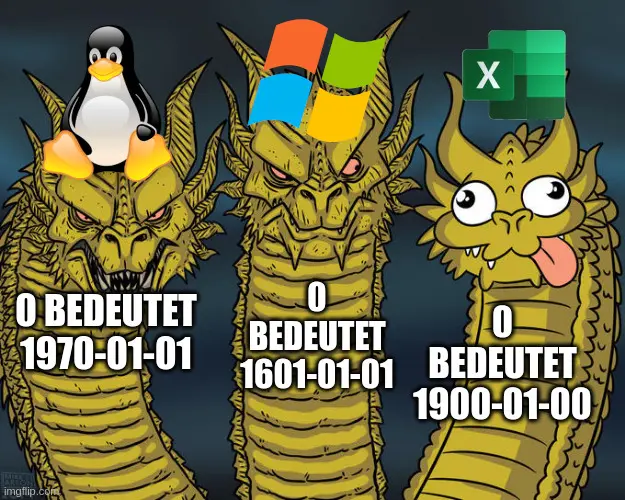

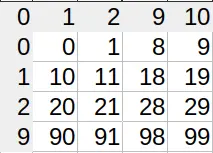
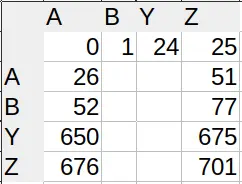
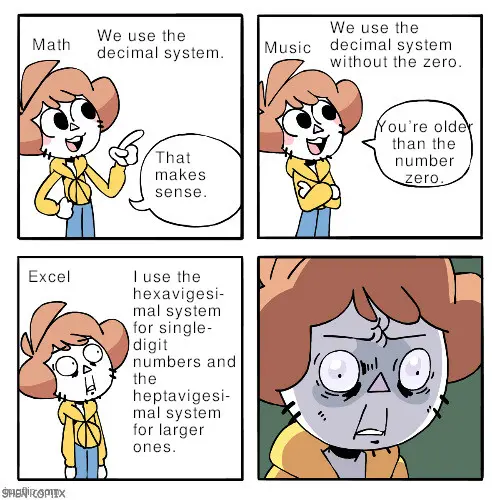







Dann eben das gute alte System.out.println() … oder was auch immer das Äquivalent in deiner Sprache ist.